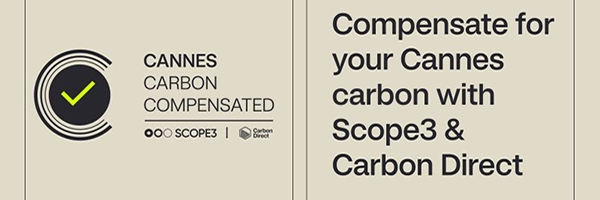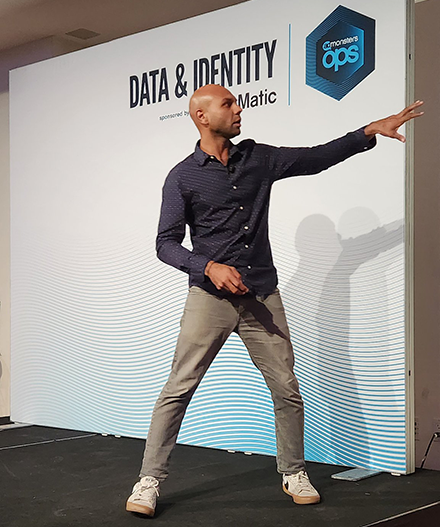 |
||||||||||
|
||||||||||
| Jet Setting to Cannes Lions International Festival of Creativity? Consider Carbon Offsetting Your Trip |
 |
| The Irony: With their plane tickets in hand, climate crisis advocates are getting ready to fly to Cannes to engage in serious discussions about the need to curb greenhouse gas emissions. It’s irony that Scope3 Co-Founder and CEO Brian O’Kelly couldn’t help but notice, as he wrote on LinkedIn: “Earlier today, I was on stage at AdMonsters having a discussion with Shoshana Wodinsky about the emissions problem in digital advertising, and the question of traveling to Cannes Lions International Festival of Creativity came up — how can someone obsessed with sustainability make the justification to fly to France?” |
| Carbon offsets have received a bad rap from some as a form of greenwashing. However, Brian Murphy, Founder of The Alpine Project, told AdMonsters that carbon removal initiatives are a critical step in the path to net zero. Businesses can ultimately reduce their emissions, so they need to invest in reputable carbon offsetting. |
|
| CNET Puts Generative AI in Check |
 |
| The News: CNET is done publishing stories that are generated solely by AI. In a memo, the publisher outlines new rules for generative AI, including a commitment to be “transparent about our process and results and to deploy new tools in smart and ethical ways.” Promising to be factual and original in all content it publishes, CNET said it would use an internal generative AI tool to help reporters organize large amounts of information and to speed up certain research and administrative portions of its workflow. Moreover, CNET will disclose whenever AI was used to generate a story it publishes. As part of its new policy going forward, CNET will no longer rely on AI to write stories or reviews from start to finish. A human will always be involved to fact check and edit all pieces. Nor will they use AIs to do any of the hands-on, product-based tests that inform reviews and ratings. “Those tests are performed by our trusted, experienced, and award-winning human experts, many of whom have a decade or more of experience with the tech they review. See here for more information about how we test everything,” CNET said. The Motivation Behind the Change: Earlier this year, CNET came under fire for publishing AI-generated stories that included several generative AI hallucinations. Of the 77 stories generated by AI and published on its site, 41 required corrections. While publishing articles with faulty information is embarrassing enough, CNET was criticized for not telling readers when articles were generated by AI, which explains the publisher’s commitment to transparency in its memo. The Learnings: When OpenAI announced ChatGPT last year, the market was essentially told that the AI could generate a wide range of content, including poems, songs, articles, and code. Generative AI, it was said, could even eliminate search, prompting Google to issue a Code Red alert on its lucrative search business. CNET was hardly alone in adopting generative AI; in its first two months, OpenAI signed up over 100 million active ChatGPT users, a new record. But reporters and editors are learning a valuable lesson: generative AI tools like ChatGPT and Bard aren’t designed to create researched, cited, and factual articles. As large language models, these tools are designed to predict what someone might say based on what others have said in the past. As they have no ability to reference outside sources, ChatGPT itself warns journalists that their critical thinking skills are needed. Put another way: ChatGPT can’t replace reporters. |
| Generative AI, in all its many forms, will undoubtedly change the way we work, boosting productivity and streamlining tedious tasks for newsrooms and AdOps teams alike. One can even imagine a world where product teams deploy it to enhance their existing products, offering a conversational chatbot to discuss news and articles with readers. As a technology new to the market (but not to AI scientists), generative AI is easy to use, which has led to its wide adoption. It also led to predictions of massive job loss and worse. In the end, however, the market will come to accept its limitations, and it will morph into just another tool to help people get their jobs done faster. |
| Captify Will Track Environmental Impact Of Online Ads |
| The News: Search intelligence platform, Captify wants to let advertisers track and reduce the environmental impact of their online ad campaigns. To achieve this goal, Captify has partnered with Good-Loop, which offers carbon-neutral advertising formats and enables advertisers to measure and reduce the carbon footprint of their digital advertising. “Online ads contribute significantly to global CO2 emissions. A recent study from Purpose Disruptors found that advertising adds an extra 32% to an individual’s carbon footprint, with digital advertising responsible for a hefty chunk of those emissions,” the company explained in its release. The Dirty Truth: Captify joins other digital ad-tech companies and media agencies that are making the climate crisis a top priority. They should, as Big Tech is a major contributor to greenhouse gas emissions. Approximately 1% of total energy consumption on Earth is used just to serve online ads. And according to a Global Action Plan report, the majority of this 1% is effectively wasted due to the RTB auctions. |
| Numerous global brands are adding chief sustainability officers to their ranks as they look for ways to reduce their Scope 3 emissions. These are emissions that the EPA describes as “the result of activities from assets not owned or controlled by the reporting organization, but that the organization indirectly affects in its value chain.” For all brands that advertise, digital campaigns are a part of their Scope 3 emissions, a metric they may be required to disclose to investors in a few years. For brands that manufacture and sell consumer packaged goods, lowering Scope 1 and Scope 2 emissions is harder than it is for, say, OpenX or other software companies. Products still need to be manufactured and shipped to market, activities that will generate large amounts of greenhouse gasses for the foreseeable future. Therefore, lowering Scope 3 will be essential, and we can expect chief sustainability officers to begin mandating green campaigns over the next few years. Ad tech companies and publishers that can support green campaigns may become the go-to partners for global brands. |
 |
||||
|
||||
 |
||||
 |
||||
|
||||








